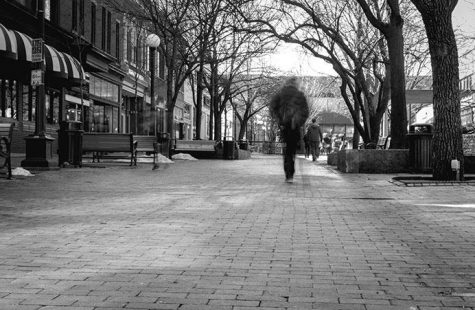Opinion: Pentacrest pedestrians need safer stoplights
The crosswalks at Iowa Avenue and Madison Street should have a countdown timer to better inform walkers.
A crosswalk light is seen on Madison Street on Monday Sept. 30, 2019.
October 1, 2019
Every Monday, Wednesday, and Friday, I have 10 minutes between classes to sprint from the Adler Journalism and Mass Communication Building to Van Allen Hall. This walk would typically take nine minutes if it wasn’t for the stoplight on the intersection of Madison Street and Iowa Avenue.
The problem with this stoplight is not necessarily how long it takes for it to allow pedestrians to walk, but rather how seven seconds after the walking man flashes, it transitions into a blinking red stop hand that stays there for 24 seconds. This is dangerous because pedestrians know the stoplights take an eternity and so they risk crossing while the hand flashes without knowing how much time they have left before the stoplight turns green.
This stoplight is notorious for taking what feels like forever in order to cross safely. Therefore, pedestrian traffic accumulates, and when the crosswalk signal flashes, the fluorescent walking-man chaos breaks out. There are students climbing up and down the mountain of the Pentacrest and students crossing from Hubbard Park to Adler and the Becker Communication Building.
One Friday, as I was rushing out of Adler and into the intersection, I felt lucky to see the flashing red hand. After all, it meant that I would not be late to my next class due to waiting several minutes in the stoplight. Because I saw everyone else walking through the intersection, I took a leap of faith and proceeded into the street.
Unfortunately, I did not know how much time I had remaining to cross, and halfway through, the stop hand stopped blinking and the traffic lights turned green. The lane of cars closest to me stopped for me as I sprinted through, but the other lane was empty. A car coming from afar spotted the green traffic light and sped up until the driver saw me accidentally jaywalking and slammed the brakes.
I felt lucky to not have been hit. In the remainder of my walk up to Van Allen, I realized how I had jeopardized my own life and the life of that driver just to get to class on time.
As I spoke with friends about my near-death experience, they all told me that they had had similar experiences in that same intersection because, like me, they never know how much time they have left to cross, so they risk it. In order to avoid accidents, a countdown timer should be implemented in the intersection’s crossing signal.
There’s also research to support this. A 2011 report in London found that intersections with crosswalk countdowns saw a decrease in potentially dangerous incidents such as vehicles having to break or swerve to avoid pedestrians, as well as pedestrians are felt safer and less rushed when walking across the street.
With a numeric crosswalk timer, pedestrians will no longer be uncertain about whether the ambiguous flashing stop hand means, “Stop because the light is turning green in one second” or if it means “Only start walking if you can cross in 15 seconds.” The countdown timer is a crucial addition to keep pedestrians safe at one of the busiest intersections on the University of Iowa campus. It would let them decide if the remaining time to cross is safe or not, thus avoiding accidents involving pedestrian or rear-end collisions.
Deciding whether or not to cross during a vague flashing, don’t-walk hand can be a dangerous decision to make, especially when you’re in a rush. A countdown timer would make the difference between causing an accident or staying safe.
Columns reflect the opinions of the authors and are not necessarily those of the Editorial Board, The Daily Iowan, or other organizations in which the author may be involved.



















